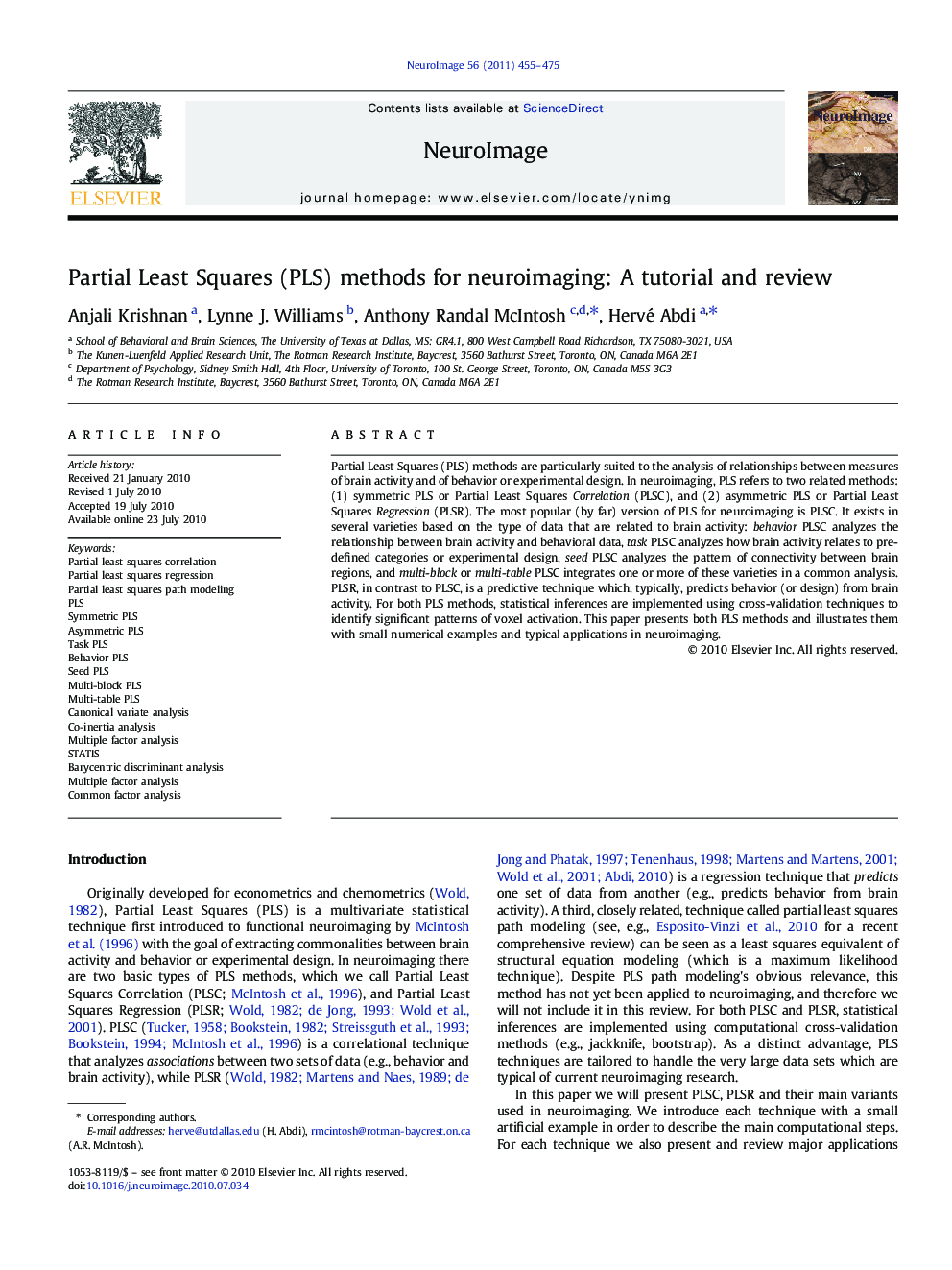| کد مقاله | کد نشریه | سال انتشار | مقاله انگلیسی | نسخه تمام متن |
|---|---|---|---|---|
| 6032525 | 1188741 | 2011 | 21 صفحه PDF | دانلود رایگان |
عنوان انگلیسی مقاله ISI
Partial Least Squares (PLS) methods for neuroimaging: A tutorial and review
دانلود مقاله + سفارش ترجمه
دانلود مقاله ISI انگلیسی
رایگان برای ایرانیان
کلمات کلیدی
موضوعات مرتبط
علوم زیستی و بیوفناوری
علم عصب شناسی
علوم اعصاب شناختی
پیش نمایش صفحه اول مقاله

چکیده انگلیسی
Partial Least Squares (PLS) methods are particularly suited to the analysis of relationships between measures of brain activity and of behavior or experimental design. In neuroimaging, PLS refers to two related methods: (1) symmetric PLS or Partial Least Squares Correlation (PLSC), and (2) asymmetric PLS or Partial Least Squares Regression (PLSR). The most popular (by far) version of PLS for neuroimaging is PLSC. It exists in several varieties based on the type of data that are related to brain activity: behavior PLSC analyzes the relationship between brain activity and behavioral data, task PLSC analyzes how brain activity relates to pre-defined categories or experimental design, seed PLSC analyzes the pattern of connectivity between brain regions, and multi-block or multi-table PLSC integrates one or more of these varieties in a common analysis. PLSR, in contrast to PLSC, is a predictive technique which, typically, predicts behavior (or design) from brain activity. For both PLS methods, statistical inferences are implemented using cross-validation techniques to identify significant patterns of voxel activation. This paper presents both PLS methods and illustrates them with small numerical examples and typical applications in neuroimaging.
ناشر
Database: Elsevier - ScienceDirect (ساینس دایرکت)
Journal: NeuroImage - Volume 56, Issue 2, 15 May 2011, Pages 455-475
Journal: NeuroImage - Volume 56, Issue 2, 15 May 2011, Pages 455-475
نویسندگان
Anjali Krishnan, Lynne J. Williams, Anthony Randal McIntosh, Hervé Abdi,